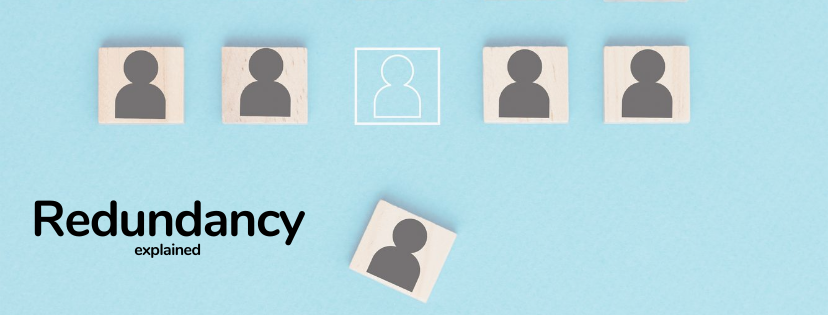If a Company Goes Bust Who Pays Redundancy? Lawful Insights for UK Worker
If a Company Goes Bust Who Pays Redundancy? Lawful Insights for UK Worker
Blog Article
Checking Out the Interplay In Between Company Redundancy and Business Versatility for Future Growth
In the vibrant landscape of today's organization world, the elaborate partnership between business redundancy and organizational versatility arises as an essential aspect for continual development and success. Firms often deal with the difficulty of striking a fragile equilibrium in between keeping a degree of redundancy to mitigate threats and fostering versatility to respond quickly to the ever-evolving market demands.
Value of Firm Redundancy
Firm redundancy is a crucial component that boosts business strength and minimizes functional threats. By including redundancy actions within the business structure, firms can better endure unexpected interruptions and changes in the service atmosphere. Redundancy works as a tactical barrier, permitting firms to adjust and respond efficiently to unexpected challenges without compromising essential procedures.
One secret element of the significance of company redundancy is its duty in making certain connection during times of crisis. When confronted with unexpected modifications or emergency situations, redundant systems, sources, or workers can action in to maintain important functions and prevent prevalent disturbances. This continuity not only safeguards the firm's track record and customer count on but also reduces economic losses and operational downtime.

Methods for Business Flexibility

Creating adaptable business frameworks that enable for quick adjustments to market dynamics and consumer demands is necessary for remaining competitive in a quickly developing environment. By proactively recognizing possible interruptions and opportunities, organizations can proactively adjust and prosper in an ever-changing service landscape.
Harmonizing Redundancy and Versatility
Attaining a harmonious stability in between operational redundancy and business flexibility is extremely important in navigating the intricacies of a if a company goes bust who pays redundancy vibrant company setting. Striking the right balance in between redundancy and flexibility is a delicate process that check that needs a deep understanding of the company's objectives, industry dynamics, and danger resistance.
To accomplish this equilibrium, firms require to perform regular evaluations of their operations to determine areas where redundancy is needed for danger mitigation and where versatility can drive advancement and growth. Executing versatile structures, cultivating a culture of continual learning and enhancement, and motivating open communication across all levels of the organization are vital approaches to balance redundancy and adaptability effectively. By lining up these two critical components, companies can position themselves for lasting growth and success in an ever-changing business landscape.
Study on Adjustment Success
In taking a look at circumstances of successful organizational adaptation, it ends up being obvious that the interaction in between functional redundancy and flexibility is a specifying factor in shaping resilient services. A DVD rental solution, Netflix showed impressive flexibility by transitioning right into a streaming system when digitalization interfered with the industry. These case studies underscore the importance of operational redundancy paired with business flexibility in cultivating lasting development and competition.
Building Durability for Future Growth
Building strength for future development requires a strategic positioning of operational procedures with market dynamics and emerging patterns. Business should adjust to changing settings by promoting a culture of adaptability, innovation, and continuous improvement.
Furthermore, cultivating solid description connections with stakeholders, such as consumers, workers, suppliers, and the neighborhood, is important for weathering unpredictabilities and preserving trust fund and support throughout turbulent times. Efficient interaction and transparency play a crucial duty in building durability, as they aid assist in and line up assumptions cooperation in navigating uncertainties.
In addition, organizations require to focus on knowing and development campaigns to upskill employees and furnish them with the needed devices to adapt to changing situations. By buying their labor force, firms can improve their flexibility and agility, eventually strengthening their resilience for lasting future growth.
Final Thought

In the dynamic landscape of today's organization globe, the complex partnership between firm redundancy and organizational versatility arises as an essential variable for sustained growth and success. Firms frequently deal with the challenge of striking a delicate equilibrium in between preserving a level of redundancy to alleviate risks and promoting flexibility to react swiftly to the ever-evolving market demands.To accomplish this equilibrium, companies need to carry out routine analyses of their procedures to identify areas where redundancy is needed for threat reduction and where adaptability can drive advancement and development.In verdict, the interaction between company redundancy and organizational versatility is vital for future development. Structure resilience with a mix of redundancy and adaptability will make sure that business are prepared for the obstacles of the future.
Report this page